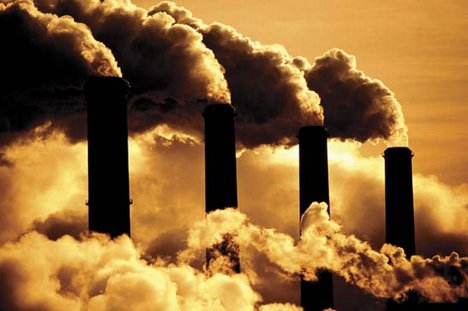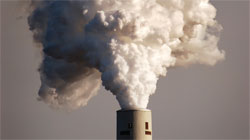Pennsylvania’s legislature finished off its fall session with a bill on the EPA’s Clean Power Plan. At a time when climate leadership, not obstructionism, is called for, it’s no step forward. But it’s not the step backward that it might have been. Here’s why.
Regulating regulation
 Just as Pennsylvania’s session came to an end last week, the state senate passed the house-approved “Pennsylvania Greenhouse Gas Regulation Implementation Act.” The act is oddly named—it actually regulates regulation, making it harder to get the necessary regs implemented, and therefore to cut the emissions of heat-trapping gases that cause climate change.
Just as Pennsylvania’s session came to an end last week, the state senate passed the house-approved “Pennsylvania Greenhouse Gas Regulation Implementation Act.” The act is oddly named—it actually regulates regulation, making it harder to get the necessary regs implemented, and therefore to cut the emissions of heat-trapping gases that cause climate change.
The bill requires that any Pennsylvania administration plan to comply with the EPA’s Clean Power Plan has to get run by the legislature before getting submitted to the EPA. If that detour slows the state’s submission of its implementation plan too much, though, the state hands power back to the federal government to come up with something for the state.
Bad basketball
This post is part of a series on the EPA Clean Power Plan.
But the really interesting piece of the process was the fact that the bill’s road to passage was bumpier than it might have been. NRDC’s Jackson Morris has a good write-up on the legislative back and forth, and why it’s more of a hollow victory than Big Coal is used to: “[I]f you actually read the bill,” he writes, “this is by no means a slam-dunk for polluters. In fact, it’s more like a bricked lay-up”—meaning about as smooth as my own basketball playing.
It didn’t go the way that Big Coal and groups like the American Legislative Exchange Council (ALEC) must have planned.
That’s because a boatload of stakeholders, including the very power companies that will have to meet the new regulations, objected to the bill. House amendments got rid of some of its more unattractive elements, including an opening with a litany of pro-coal declarations that completely ignored Pennsylvania’s vibrant renewable energy and natural gas (!) industries, and climate change. Senate amendments whittled away at the bill even more, before they got undone (“in the dark of night,” says Morris).
Big Coal’s weakening grip
The bill’s travails show that many Pennsylvanians—in the legislature and in the Pennsylvania public at large (at least three-fifths, and lots of science-loving UCS supporters)—get that the energy transition is already underway, and that that’s a good thing, not something to run from.

Let’s grow that green wedge. Pennsylvania’s electricity mix (2013; source: EIA)
Having serious discussions about how to make the transition toward a clean energy future—including about the future of coal communities that have served us for generations—makes sense. Blocking progress—toward cleaner air for Pennsylvania and a more secure energy future for the country—doesn’t.
Pennsylvania has plenty of options for meeting the Clean Power Plan, including lots of renewable energy and energy efficiency opportunities. The fact that coal’s economics are already looking increasingly unattractive, thanks to competition from renewables and natural gas, make the transition—and the EPA moves—that much more appealing.
Brighter future, and more ball
And signs of progress are all around, including in ALEC’s rapid loss of members who get that ALEC’s obstructionism on energy and climate issues is more than poor sportsmanship.
With regard to this latest bill and the coal industry, as NRDC’s Morris put it (emphasis added):
…if all that is the best Big Coal can do in the Keystone State in 2014, there’s one takeaway: their previously white-knuckle grip on the throat of the legislature is seriously slipping…
EPA’s regulations will put the ball in Pennsylvania’s hands for cutting carbon. It’s time for some serious offense.

